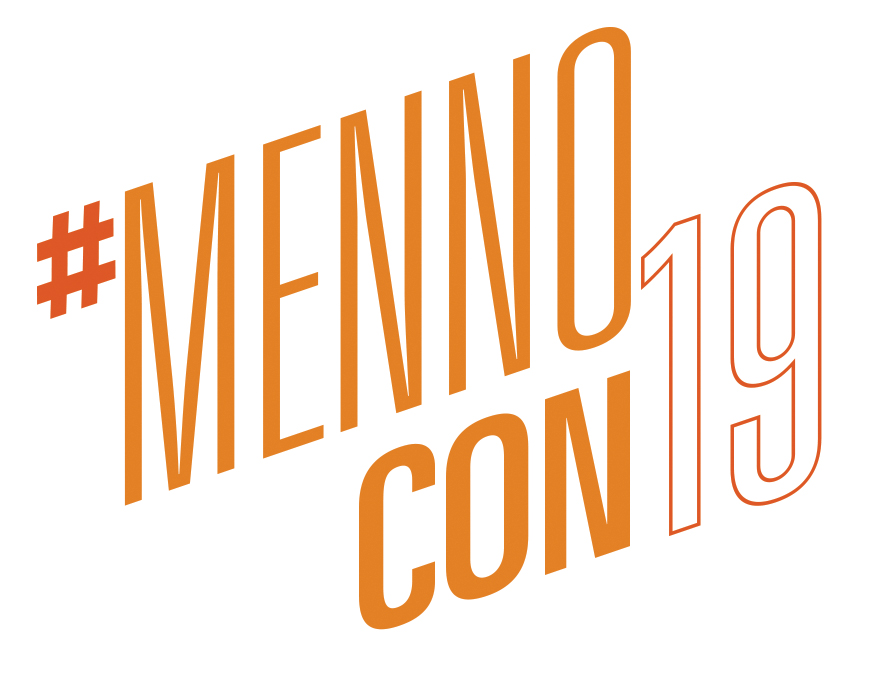 Sue Park-Hur is denominational minister of Leadership Development for MC USA and a worship speaker at MennoCon19.
Sue Park-Hur is denominational minister of Leadership Development for MC USA and a worship speaker at MennoCon19.
John 20:19-23
On the evening of that first day of the week, when the disciples were together, with the doors locked for fear of the Jewish leaders, Jesus came and stood among them and said, “Peace be with you!” After he said this, he showed them his hands and side. The disciples were overjoyed when they saw the Lord.
Again Jesus said, “Peace be with you! As the Father has sent me, I am sending you.” And with that he breathed on them and said, “Receive the Holy Spirit. If you forgive anyone’s sins, their sins are forgiven; if you do not forgive them, they are not forgiven.”
When I was eight years old, I immigrated to the United States with my family. We moved to a small suburb northeast of Los Angeles where there weren’t many Asians. Most of the kids were friendly, but I do recall one incident in 3rd grade when a school bully came up to me, walked in a circle around me and said, “Ching chong, you Chinese chink!” My face burned red and my heart palpitated, but my response was, “I’m not Chinese!”
“Then you are a stupid Japanese!” she retorted as she squinted her eyes and slanted them with her fingers.
My heart beat a little slower and I responded more calmly. “I’m not Japanese!”
“Then what are you?” she asked. I wasn’t sure if I wanted to respond to her very limited knowledge of Asian geography, but I did.
“I’m Korean!” I shouted.
She looked at me blankly and asked, “What’s that?”
Although these days I don’t regularly get blatantly racist questions directed at me as I did on the playground in 1981, I do still get that quizzical look of, “What are you?” when people ask me about my denominational affiliation.
My Korean friends have no idea what a Mennonite is. “What’s that?” is their usual response. My friends who have heard about Mennonites are also confused, because they have a certain perception of what a Mennonite should look like — the head covering, plain clothing, the buggy— and well, it’s not Asian.
I joined the Mennonite Church not because of the unique fashion statement, the cool black buggies, the potlucks or even the music. What drew me and my husband to the Mennonite Church was the reputation that Mennonites have of being a faithful peace witness as followers of Jesus. We heard about a small group of folks who for over 500 years tried to seriously follow Jesus, the Prince of Peace and this intrigued us.
It intrigued us because my husband and I were born in a place where civil war had ravaged a country, its people, its land, its very heart and soul. The scars of the war have been branded on the lives of our parents and our grandparents, and that trauma has been transmitted to us and our children. Sixty-nine years later, North and South Korea are still divided and the Korean Peninsula is considered one of the most dangerous places in the world with nuclear capabilities to start a world war.
We wanted to learn how Mennonites understood peace and what Jesus had to say about peace. What is the role of the church in a world where violence seems to increase power, and peace seems hopelessly idealistic? Is peace even possible? The phrase “peace be with you” is used so routinely in peace churches that we sometimes forget that those were Jesus’s first post-resurrection words. Jesus proclaimed to his disciples in his resurrected body with his resurrected voice, “Shalom be with you.”
Shalom is a powerful word that includes more than an absence of war. It encompasses wholeness, right relationship to and with everything. Shalom is a right relationship with God, oneself, others and creation.
Shalom was the last thing the disciples in the John 20 passage were experiencing. They’d witnessed the sky darken in midday and literally felt the foundation of the earth shaking when Jesus was crucified. They were shaken to the core. Their leader had been executed and they were certain that the same fate awaited them. They certainly didn’t know how to relate to one another without their leader and were battling the fear snowballing inside their heads. And into this fear-filled room with petrified disciples, Jesus entered unexpected and greeted them saying, “Peace be with you.”
The announcement of “Peace be with you” is both a cosmic and a personal proclamation of the resurrection. By cosmic, I am referring to Revelation 21:5-6, where Jesus proclaimed, “I am making the whole of creation new … I am the Alpha and the Omega, the Beginning and the End.” This includes all of time and space. The one who co-created the world in the beginning has declared that all things in creation have been made right again — from the beginning and the end. Not just people, nature, earth, but the entire creation. Through his death and resurrection, Jesus has created a new reality over all things — a new creation. The power of violence and chaos, death and destruction will not get the last word for Jesus has restored shalom in the cosmos. This is the good news of the resurrection.
 In addition, “Peace be with you” is also a deeply personal invitation that Jesus offers to his disciples. He extends peace to his disciples who abandoned and betrayed him. He comes to them not to haunt them as a ghost or seek revenge with his cosmic power. Instead, Jesus stands amongst those whom he loved deeply, those he had been hurt by, and releases them to a new way to be with him — one of restoration and forgiveness.
In addition, “Peace be with you” is also a deeply personal invitation that Jesus offers to his disciples. He extends peace to his disciples who abandoned and betrayed him. He comes to them not to haunt them as a ghost or seek revenge with his cosmic power. Instead, Jesus stands amongst those whom he loved deeply, those he had been hurt by, and releases them to a new way to be with him — one of restoration and forgiveness.
Although we are small in numbers, Mennonites are known across the world for our peace witness. It is gift that Christ has given to us through his resurrection, and we have the gift of a faith tradition and stories that can guide us into the unknown future.
How will we share these beautiful and messy stories — embodied stories of peace so that the peace of Christ can be shared?
To be a peace witness, as followers of Jesus, we need to know our purpose: our purpose is to be present and proclaim the gift of peace to those closest to us and to the world.
It is not easy to be present with the gift of peace and to stand with those who are deeply afraid. It is not easy because we are also afraid. We want to hide our fears, and being with vulnerable people stirs the fear we have. Also, often we often don’t know how to be allies and are afraid to mess up. But the power of the presence that we can offer is a true gift. The presence of Christ’s peace in a world where violence seems to be winning — this is our work. Presence can be personal — like holding the hands of a person in a hospital room, a funeral or a public march. Being present means standing with those who are hurting. And people are hurting all around us — the systemic-violence against migrant families, the ongoing evil of mass incarceration, the monstrous growth of the war industrial complex, the exploitation of resources on native lands. Christ has shown us what it means be present with those who are deeply hurting.
Not only are we to offer our presence, but we are also called to proclaim the peace of Christ. Sometimes we hesitate to proclaim and to speak the hope and the gift we have received. We hesitate because we have seen the Christian message twisted to provoke violence and it has done more harm than good. This is understandable, but I believe the Mennonites have an understanding of the peace of Christ that we can offer the larger Church. In a recent article, John Roth wrote, “We have been entrusted with a wonderful treasure, one meant to be shared.”
__________________________________________________________________

